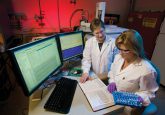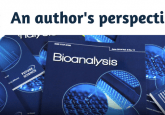The power of HPLC for endogenous compound analysis

To get a better understanding of the bioanalytical applications of chromatographic separation techniques, we interviewed Makoto Tsunoda (Associate Professor, University of Tokyo, Japan). Makoto described their research developing quantitative methods for endogenous compound analysis in a range of complex matrices. Makoto also discussed the power of HPLC and speculated on the future possibilities of on-chip chromatography applications.
Makoto Tsunoda obtained a PhD from the Graduate School of Pharmaceutical Sciences, University of Tokyo in Tokyo, Japan. After graduation, he worked as a postdoctoral research fellow at Ames Laboratory, Iowa, USA. He is currently associate professor at the University of Tokyo where his research interest is in on-chip liquid chromatographic separation techniques and the development of bioanalytical methods for biological compounds. He has over 90 peer-reviewed papers, 12 review articles and 3 book chapters.
Q How did you get involved in the field of bioanalysis? What is the current focus of your research?
When I was a graduate student, I started the analysis of biological compounds. At that time, I developed an analytical method for measuring catecholamines using HPLC–chemiluminescence detection. As catecholamines are present in very low concentrations in biological samples, especially in plasma, it was necessary to develop a highly sensitive and selective method. Since then, I have developed many analytical methods to detect biological compounds including amino acids, thiols and so on. Most of them can be applied to biological samples with good validation. Using the developed methods, we could clarify some important and new biological phenomena as well as the roles of biological compounds in some diseases, such as hypertension or cancer. As well as this, in this decade, I have developed on-chip separation technology which I will explain more in later questions.
Q Could you describe your experience using chromatographic separation technologies for endogenous compound analysis?
We are focusing on the analysis of biological compounds and elucidation of biological phenomena by their precise quantification. Hence, it is critically important to develop powerful analytical techniques that can carry out quantitative or qualitative analyses of a large number of endogenous compounds in a wide array of different and complex matrices. Endogenous compounds can be separated with chromatography, specifically, our developed analytical methods use HPLC as the chromatographic separation technique of choice. HPLC is the most common approach to solve multiple analytical problems, as it allows the separation of quite complicated mixtures of analytes with different molecular weights as well as different polarities and acid–base properties.
Q In your research and use of HPLC, what are the most common challenges that you face? Do you have any solutions to address them?
Currently, the most common challenges that we have encountered are as a result of the chromatographic separation technologies not being sufficient for the complete separation of the target compounds, especially when they are very tiny. When the separation is insufficient, we have addressed this challenge by performing selective pre-treatment with solid-phase extraction or selective derivatization of some functional groups. Furthermore, we have applied two-dimensional liquid chromatography to increase the separation power and selectivity.
Click here to view the rest of our Spotlight on chromatographic separation technologies>
Q Has your chromatographic separation technique of choice changed with any technological advancements?
Yes, for me the biggest change was the emergence of hydrophilic interaction chromatography (HILIC) columns. As our target compounds are very hydrophilic biological compounds, it was sometimes a challenge to retain (and separate) them on reversed-phase columns (normally octadecylsilyl columns). HILIC columns can overcome these drawbacks. As there are many types of HILIC stationary phases available, it is important to select an appropriate stationary phase depending on the properties of the analyte. In my case, catecholamines and thiols could be well separated using zwitterionic columns. This analysis can be applied to urine samples.
Q What recent or emerging chromatographic technologies are you particularly excited to see develop?
Personally, I am most interested in seeing the development of on-chip chromatographic techniques, which have great potential for bioanalysis. Four kinds of approaches – open tubular, particle packed, monoliths and pillar array columns – have been developed for on-chip chromatography. Among them, I think the pillar array columns are the most exciting technology so far. Pillar array columns have a perfectly ordered internal structure on a silicon chip, which can be fabricated by micromachining lithographic technologies. Thanks to their reproducible and highly ordered structures, pillar array columns can eliminate heterogeneous flow paths found in conventional LC columns. As a result, separation efficiency is improved. We are studying pillar array columns, especially for the analysis of biological samples. We have actually successfully completed a very fast quantitative analysis of amino acids in human plasma samples using pillar array columns.
Disclaimer
The opinions expressed in this interview are those of the interviewee and do not necessarily reflect the views of Bioanalysis Zone or Future Science Group.
Our expert opinion collection provides you with in-depth articles written by authors from across the field of bioanalysis. Our expert opinions are perfect for those wanting a comprehensive, written review of a topic or looking for perspective pieces from our regular contributors.
See an article that catches your eye? Read any of our articles below for free.






